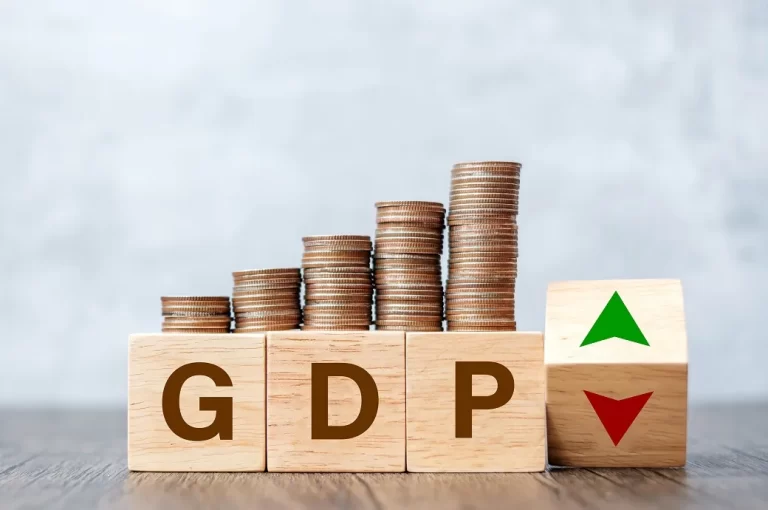What is GDP?
Part 1. real goods, employment, and business management indicator
Part I consists of economic indicators related to real goods, employment, and business management. These indicators include National Income Statistics, Input-Output Tables, National Income and Expenditure Accounts, Employment and Wage Statistics, Economic Sentiment, and Business Management Analysis Indicators. Through these economic indicators, we can observe a series of cycles involving the production, distribution, consumption, and reinvestment of goods and services.
National Income Statistics show how the income generated by economic agents participating in production activities over a certain period is distributed and disposed of. Input-Output Tables are statistics that illustrate the production and disposal processes of goods and services, helping to identify not only direct relationships between industries but also indirect interconnections using final demand and output relationships.
In the production process of goods and services within the national economy, labor and capital are essential components. Employment Statistics are used to determine the extent of labor supply, while income received as compensation for labor is verified through Wage Statistics.
National Income and Expenditure Accounts show the accumulated wealth (net assets) of the entire national economy, as the results of the production, consumption, and investment of goods and services accumulate over time. Economic Sentiment Indicators help in understanding the cyclical process known as the business cycle, which involves expansion and contraction of economic activity.
Additionally, businesses determine the appropriate capital input for future economic prospects and management capabilities. Business Management Analysis Indicators compile various financial information used in this decision-making process.
These indicators related to real goods, employment, and business management are closely interconnected through the cyclical process of producing, distributing, and reinvesting assets in goods and services.

The U.S. Department of Commerce published an article in the January 2000 issue of the "Survey of Current Business" titled "GDP: One of the Great Inventions of the 20th Century." This highlights the significance of Gross Domestic Product (GDP) as a crucial invention for economic analysis and policymaking worldwide.
GDP emerged alongside the field of macroeconomics, particularly during the Great Depression. At that time, available information for assessing the overall economic situation was limited to scattered statistics like stock prices, railroad transport volume, and steel production. There was no comprehensive indicator to judge the overall economic health, leading to reliance on guesswork.
To gain a more accurate understanding of the national economic flow, the U.S. Department of Commerce enlisted the help of Simon Kuznets to develop GDP statistics. Kuznets presented his GDP concept to the U.S. Congress in 1937, focusing more on income than production. As policymakers recognized the need to comprehensively measure economic activity during World War II, GDP evolved into its current form. In 1942, the U.S. Department of Commerce released GDP and GNP (Gross National Product) estimates.
The contribution of GDP statistics to economic development is evident in the economic trends of the United States. Despite experiencing a sharp 12.9% decrease in 1932 during the Great Depression, GDP exhibited a milder 2.8% decline during the severe economic recession in 2009. This reduction in economic volatility can be attributed to the ability to swiftly assess the overall economic situation using GDP, resulting in more effective policy responses. In this way, National Income Statistics represented by GDP are a crucial indicator for the entire national economy. They provide insight into the total production (and income) generated by a country over a specific period, serving as the foundation for measuring economic growth and informing policy decisions.
Gross Domestic Product(GDP)
A nation’s economic strength, economic activity, and the standard of living of its citizens can be assessed through various economic indicators. For example, indicators such as the scale or changes in exports, automobile production, steel production, which are closely related to economic activity, can provide some insight into economic performance.
However, individual indicators like these have limitations when it comes to showing the overall picture of a national economy. For instance, just because a country produces more automobiles than another country doesn’t necessarily mean its economy is larger. Similarly, if one country’s exports surpass those of another, it doesn’t necessarily mean that the citizens of the first country have a higher standard of living. Moreover, claiming that a country’s overall economic activity has become more vigorous solely based on a significant increase in its steel production would be difficult.
National Income Statistics provide a comprehensive overview of a country’s overall economic performance, unlike individual economic indicators. They serve as essential data for formulating and evaluating economic policies and as a basis for economic analysis. Among the widely used indicators in National Income Statistics is Gross Domestic Product (GDP).
the concept of gross domestic product (GDP)
Gross Domestic Product(GDP) is a measure that sums up the market value of all goods and services newly produced within a country during a specified period. Here are some key aspects of this concept:
Within a Country: GDP considers economic activities that take place within the geographical territory of a country. However, it does not necessarily need to perfectly match the geographical borders, and it can depend on where the predominant economic interest lies.
Specified Period: GDP measures the flow of production and income over a defined period, typically on an annual or quarterly basis (e.g., every three months).
Newly Produced: GDP reflects the value added by goods and services produced in the given year or quarter. For example, when a car manufacturer produces and sells new cars, the value of those new cars is included in GDP. However, transactions involving used goods from previous years are not included.
Goods and Services: GDP encompasses both goods (physical items like rice, clothing, cars, and buildings) and services (non-material efforts like transportation, accommodation, finance, healthcare, education, and cultural activities) that are produced to meet people’s needs and desires for living, both materially and mentally.
Market Value Summed Up: GDP is calculated by multiplying the quantity of various goods and services produced with their respective market prices and then summing these values. In essence, GDP aggregates a wide variety of goods and services, each with different characteristics and physical units, into a single economic indicator based on market prices.
GDP serves as a fundamental measure of a country’s economic activity, providing insights into its economic performance, growth, and overall economic health. It is a vital tool for policymakers, economists, and businesses to make informed decisions and assess the economic well-being of a nation.
Measurement of Gross Domestic Product (GDP)
Let’s consider a scenario where a notebook manufacturing company purchases paper from a paper manufacturing company for 70 cents and then produces and sells the notebooks to consumers for 200 cents. In this case, we will examine how Gross Domestic Product (GDP) is calculated while avoiding double-counting the value of paper.
Output Value: The value of the notebooks produced by the notebook manufacturing company and sold to consumers, which is 200 cents, is the output value.
Intermediate Input Value: The value of the paper purchased by the notebook manufacturing company from the paper manufacturing company, which is 70 cents, is the intermediate input value.
Value Added: Value added represents the newly created value. It is calculated by subtracting the intermediate input value from the output value. In this case, it’s 200 cents (output value) – 70 cents (intermediate input value) = 130 cents.
When calculating GDP, we focus on value added to avoid double-counting. Therefore, the contribution of the notebook manufacturing company is considered as 130 cents of value added. Additionally, GDP only considers the value of the final product, so the intermediate input value (70 cents) is not double-counted because it’s already included in the notebook production process.
This approach to GDP calculation accurately reflects the value created at each stage and avoids double-counting. GDP considers only the value of the final product, and any value already included in intermediate stages is not counted again.
Value added = output – intermediate input
The measurement limits of Gross Domestic Product
Household Services, Homeownership, Underground economy
The claim that marrying a person who was previously employed as a domestic helper would lead to a decrease in GDP is indeed accurate. This is because domestic helpers receive payment for their services, which is included in the GDP. However, when a person marries their domestic helper, and they become family members, the same domestic services provided no longer contribute to the GDP. This exclusion from GDP is based on the standard measurement criteria set by the System of National Accounts (SNA).
The reason for not including the domestic services provided by full-time homemakers in the GDP is primarily because domestic services are considered independent activities that have little impact on other sectors of the economy. Additionally, since these services are not produced for sale in the market, there is no appropriate market price to evaluate their value, making it challenging to include them in GDP calculations. Lastly, if domestic services were included as part of economic production, it could distort employment statistics, as nearly the entire adult population would be considered employed.
On the other hand, the housing services provided by owner-occupied homes are included in GDP. In the case of rental properties, the rent paid by tenants contributes to GDP as it represents the payment for housing services. Similarly, owner-occupied homes are considered to provide housing services, and this value is included in GDP. The methodology involves assessing the amount that would be paid for similar housing if it were rented, and this value is accounted for in the household’s income and expenditure.
As for the underground economy, it typically involves illegal or unrecorded economic activities. Such activities are often not included in GDP calculations. However, not all underground economic activities are illegal; some unreported or unrecorded activities (e.g., taking care of a neighbor’s pet for a fee) may also not be reflected in GDP. The underground economy usually consists of transactions that are not reported to authorities or recorded officially, and as a result, they do not contribute to GDP.
Digital, Sharing Economy
In the past, people used to search for information in libraries or physically go to movie theaters to watch films. However, today, we use smartphones to search for information and even download movies to watch. The proliferation of digital technology has made our lives more convenient and prosperous in many ways. However, there have been discussions and doubts about whether this prosperity is adequately reflected in GDP statistics.
Internationally, there is ongoing discussion about how to accurately capture the digital economy in GDP statistics. With the advancement of digital technology, various sharing economy platforms such as Airbnb and Uber have emerged and are growing in scale. To understand the production scale of the sharing economy, it is necessary to compile basic statistics. However, since most sharing economy transactions occur between individuals, it is not easy to accurately determine the current situation. Additionally, there is a suggestion, primarily in academia, to include the utility that individuals derive from free digital services like Google and YouTube in GDP calculations.
As a result of the digital and sharing economy, new phenomena are emerging, and discussions are currently underway on how to incorporate these phenomena into GDP statistics. While the scale of the digital and sharing economy in South Korea may not be significant yet, efforts are being made to collect basic data and incorporate them into economic estimates, preparing for potential growth in these activities. South Korea is also collaborating with international organizations such as the OECD and IMF to monitor the progress of discussions on this topic continually.













